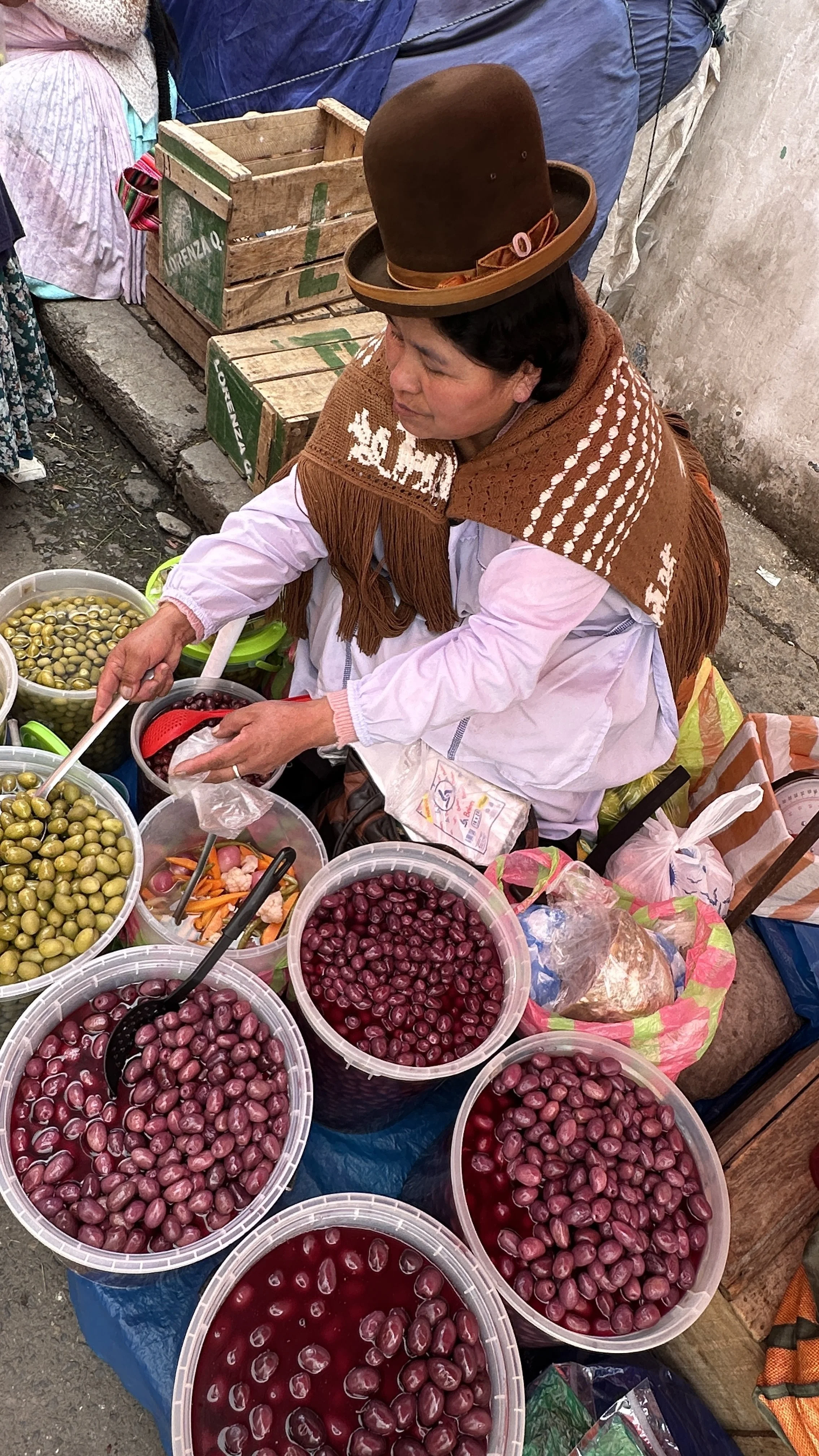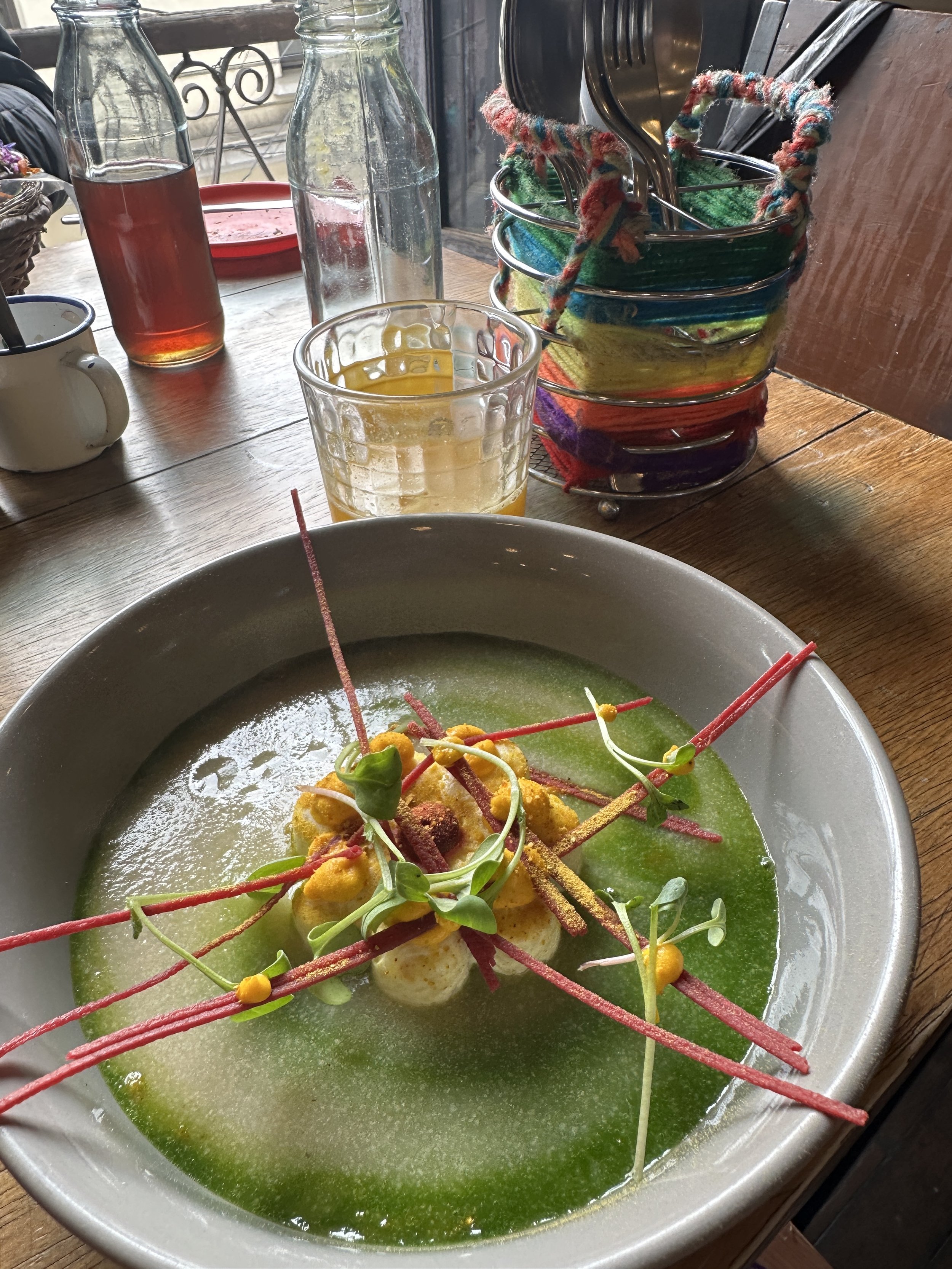Chaos, Culture and Cloud-Kissed Peaks
Long before we arrived in Bolivia’s capital, we were warned about its big-city “ills” — La Paz is said to be rife with pickpockets and pollution, and has a reputation for being unsafe after dark. As travellers who often go off the beaten track, we are prone to take such advice with a pinch of salt. But after a succession of setbacks in Bolivia — including a grim experience crossing the land border from Chile, and a bout of altitude sickness in the highlands of Uyuni — we found ourselves unusually disheartened.
We arrive in La Paz from Bolivia’s other capital, Sucre, after an 11-hour bus ride. The segueing from a pleasant, slower-paced city to the freneticism of La Paz is an assault on our senses. Its streets are home to frenzied traffic and the occasional whiff of urine in alleyways, while its sprawling, vibrant markets spill over onto gravel lanes meant for vehicles.
And perhaps nowhere else in the world would you see shrivelled up llama foetuses hanging in city centre stores, but they are characteristic of La Paz’s must-see Mercado de las Brujas (Witches Market), where myriad shops perform ancient rituals for good luck and protection.
Bedlam and black arts aside, there is something arresting about how the administrative capital of Bolivia has managed not only to retain its centuries-old cultural traditions, but also embrace them as part of its modern identity. And so, we grit our teeth and decide to push past its chaos in hope of discovering its hidden treasures.
Sky-high secrets: A city in the clouds
At 3,600 metres above sea level (and rising to 4,100m in its metropolitan areas), La Paz is the highest capital city in the world. Set in a deep valley surrounded by beautiful snow-capped Andean peaks, its undulating terrain renders the city best navigated by its world-class “Mi Teleférico” cable car network.
At 3 Bolivanos (US$0.45) for a ride between stations on the same line, the cable car fast becomes our favourite way to see the city. Used by locals and tourists alike, the stations are impressively modern, and the rides are never congested. As we soar effortlessly above the city, we find ourselves marvelling endlessly at La Paz’s awe-inspiring landscapes.
In contrast, the roads are congested with “colectivos”, a complex network of minibuses which requires significant local knowledge to master. More often than not, the vehicles are poorly maintained and cough out plumes of black exhaust — starkly at odds with the world-class cable car system.
But we embrace both modes of transport, squeezing in with locals at the back of the minibuses, learning to flag them down and ask to be dropped off. Our favourite cable car stop is El Alto, which hosts a famous Sunday market. This is where we have one of our most local meal experiences underneath a makeshift tent, sitting shoulder to shoulder with locals and precariously balancing our lunch on a stool in front of us.

El Alto is also where many go to watch wrestling matches between “cholitas”, Bolivian women dressed in indigenous costumes. While the practice has its roots in strengthening women against domestic abuse, these days the matches are over-the-top performances. Highly entertaining and interactive, the women do battle with death-defying moves similar to the ones used by American WWE wrestlers. Sitting in the front row, we find ourselves in constant jeopardy, for on more than one occasion, the cholitas throw their opponents out of the ring and right into the audience!
Having earlier learned about how local “witches” use llama foetuses, we go off the beaten track in El Alto to locate a divination street, where yatiris (or healers) perform rituals rooted in ancient Andean cosmology. Fire pits used for burning offerings line the streets and witch doctors chant incantations while invoking the spirits. Poking our heads into one shop, we glimpse a healer brushing a bunch of leaves over a child. The healer shoots us a withering glance and knowing our presence is intruding on the sanctity of the ritual, we make a quick exit.
Hidden haute cuisine: A gourmet revelation
When we first step foot into the grim chaos of La Paz, food, let alone gourmet food, never crosses our minds. Only a few days in, and an unexpected gastronomic vista slowly reveals itself to us. We find culinary gems tucked away in secret corners of the city, many serving artfully created menus that would put some Michelin-starred restaurants to shame. Gustu, founded by Noma’s co-founder Claus Meyer, is a 15-minute walk from Irpavi cable car station. Set in a striking concrete building, it interprets traditional Bolivian flavours with a modern twist.
Nearer to the city is the more accessible Bolivian Popular Food, where we thoroughly enjoy a beautifully presented 3-course lunch for just 100 Bolivianos (US$15). The restaurant opens only for three hours during lunch and queues start to form an hour before opening time.
The food tastes as good as it looks at Bolivian Popular Food. This quinoa soup was just one course in our beautifully curated menu.
It isn’t just the food that more than hits the spot; the service is top-notch and the team is wonderful to watch in action. Many of them are able to explain the complex flavours of the dishes in both Spanish and English. They work rapidly and seamlessly together to cope with two lunch seatings a day and yet, never once appear intrusive or pushy.
Going from fine dining and onto the streets, La Paz does not disappoint. Our initiation into its street food — which Bolivians are deservedly proud of — is through two skewers of tender anticuchos (beef heart), which are perfectly charcoal-grilled. Later, when we chance upon a crowd gathered in front of a “tripitas” (stir-fried beef tripe with garlic) food cart, the offal lover in me comes to an instant stop. For the next few days, each time we pass the street, we find ourselves unable to resist a serving of tender stir-fried tripe resting on a bed of potatoes - all for US$1.
A modern metropolis anchored in timeless traditions
Whether strolling amongst thick crowds in the city centre or wandering through a quiet residential neighbourhood, it’s impossible to miss La Paz’s cholitas — indigenous women of Aymara or Quechua descent. These local women are dressed in distinctive traditional attire, always with their emblematic bowler hat, corset-style top and a voluminous skirt over layers of petticoat.
Cholitas are always perfectly put together, with their pretty hats and colourful skirts. A cape or shawl completes the outfit, especially in colder weather.
Some of them have been selling fruits and vegetables in the local markets for decades, some hawk handicrafts, and yet others are successful merchants who are matriarchs of their households. Regardless of their backgrounds, they don their traditional attire with pride and freely roam the city. We learn, however, that this was not always the case.
Once discriminated and stripped of their rights, the term “cholita” was derogatory in colloquial Spanish and referred to a poor country girl. Relegated to the margins of society during Spanish colonial rule, the cholita culture all but vanished. It experienced a resurgence only in the 1990s and gained further recognition with the election of Bolivia’s former President, Evo Morales, in 2005.
Lucy and her mother, a cholita of Aymara descent, own a vegetable stall at Mercado Rodriguez in La Paz.
Against this backdrop, cholitas display exceptional resilience. We have the fortune to meet Rosario, mother-in-law of our Airbnb host Yazz, over a home-cooked Singaporean dinner that we rustle up. An accomplished Aymara businesswoman who has buried herself in work her entire life, Rosario displays a stoic expression when we first meet, but softens later, grinning as she shares with us her life.
We later learn from Yazz that Rosario has always preferred hard work to recreation. She is head of her household, having dabbled in trading goods for decades and even in her 80s now, is not looking to retire.
Bolivia may be one of South America’s poorest nations, but its respect for women and courage in overturning discrimination is admirable. Leaving La Paz, we are thankful to have witnessed how it’s displayed such grace in embracing its ancient traditions.
After all, in a world that is increasingly homogenous, La Paz is a refreshing change.
-
Bolivia’s visa on arrival comes with some pretty complex requirements. We ended up paying a rather hefty sum and coughing up some hush money when crossing the land border from Chile into Bolivia. Where possible, obtain a visa before entering the country, even if your passport allows for a visa on arrival. It is much cheaper and hassle free!
Staying in the city centre put us in close proximity to the bus terminal and most attractions, but we preferred staying in the quieter and cleaner neighbourhood of Sopocachi. It was easy to get to the city centre via the cable car or mini bus. Walking took us just 30 minutes, and was very pleasant in the autumn weather.
When we were in La Paz (in 2025), the street rate for currency exchange was almost double the official bank exchange rate. Needless to say — change your US dollars or Euros at street money changers or money exchange houses, never in the banks.







